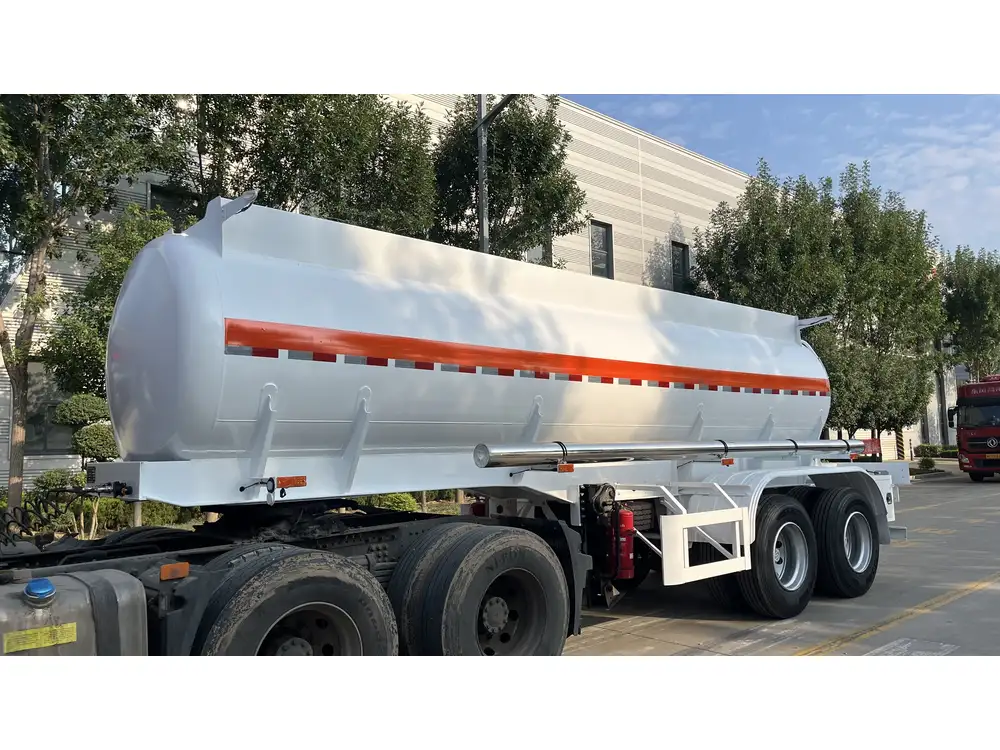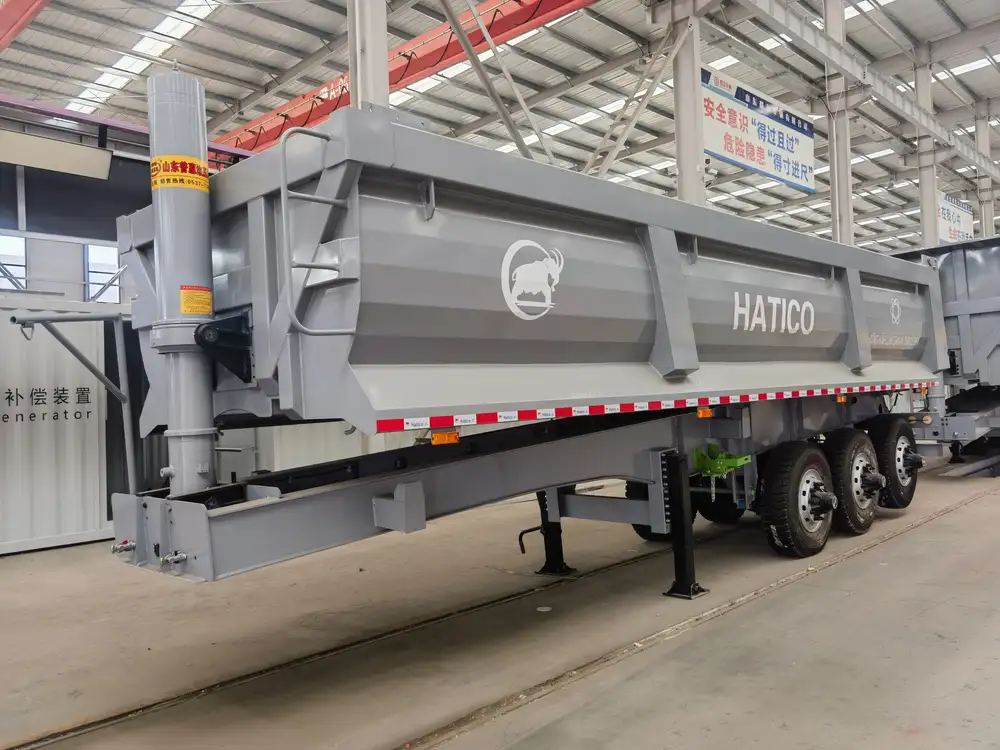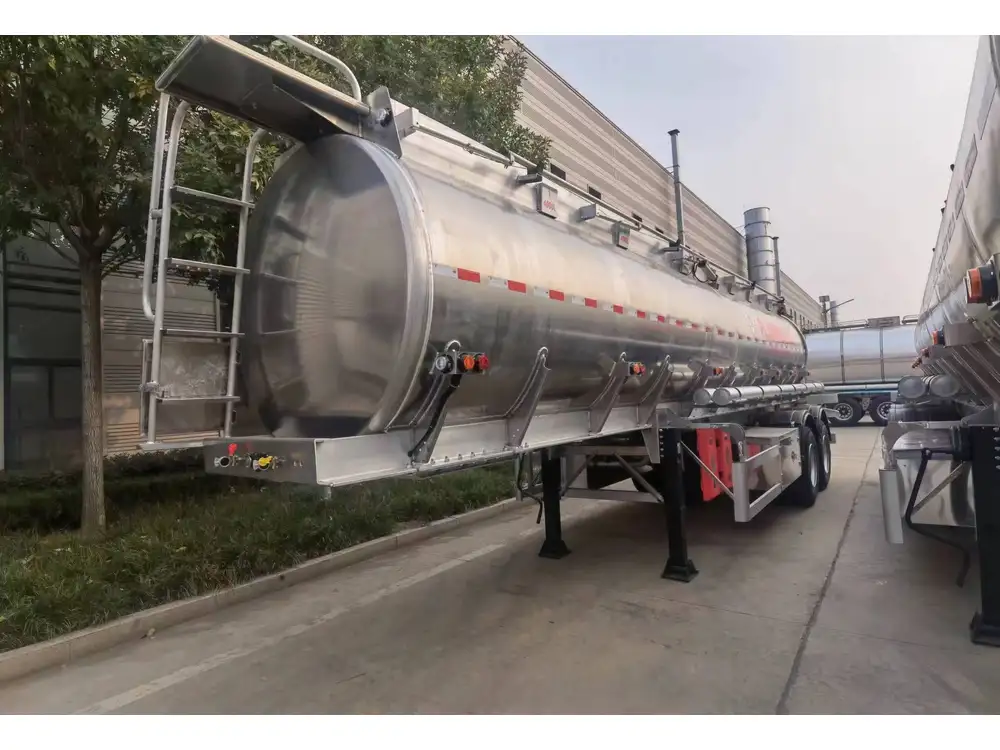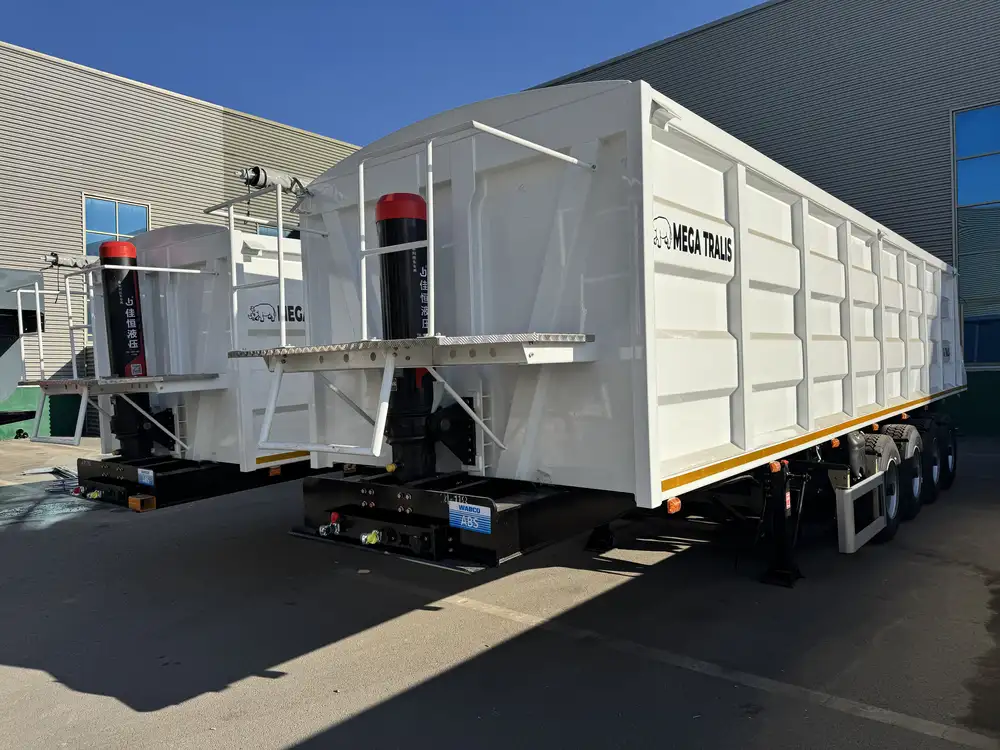Winter is synonymous with snow, and for those in the logistics and transportation industry, it often brings challenges that require immediate attention. Clearing snow off a semi-trailer is crucial not only for safety but also for operational efficiency. In this guide, we will explore effective methods, tools, and best practices for removing snow from your semi-trailer, ensuring you’re set for success every winter.
Understanding the Impact of Snow Accumulation on Semi-Trailers
Safety Concerns
Snow accumulation on a semi-trailer poses several safety risks, including:
- Visibility Obstruction: Snow can obstruct vital components such as lights, mirrors, and windshields.
- Weight Distribution and Stability: Excessive snow can alter the weight distribution, affecting stability and increasing the risk of rollovers.
- Falling Ice Hazard: Icicles or heavy snow on the trailer can fall during transit, endangering other road users.

Operational Efficiency
For transport professionals, delays caused by snow buildup can lead to significant operational inefficiencies. Timely removal of snow is essential to maintain delivery schedules and reduce costly downtime.
Pre-Clearing Preparation
Before embarking on snow removal, it’s paramount to prepare adequately.
Gather Essential Tools and Equipment
To efficiently clear snow off a semi-trailer, ensure you have the following equipment on hand:
| Tool/Equipment | Purpose |
|---|---|
| Snow Shovel | Manual removal of snow |
| Snow Brush | Removing lighter snow and ice |
| Ice Scraper | De-icing surfaces |
| Heavy-duty Floor Mat | A stable footing during snow removal |
| Protective Gear | Gloves, warm clothing, and boots |
| Ladder (if applicable) | Accessing the top of the trailer |

Assess the Situation
Inspect the trailer for snow accumulation. Identify which areas require immediate attention. Prioritize clearing vital components, such as the roof and visibility elements.
Step-by-Step Guide to Clearing Snow from a Semi-Trailer
1. Start with the Roof
The roof is often the hardest hit area during winter storms. Follow these steps to clear the snow:
- Safety First: Ensure that you’re wearing appropriate protective gear. Utilize a ladder for higher access, and always secure yourself.
- Use the Right Tool: Depending on the thickness of the snow, use a snow shovel or a specialized snow rake.
- Avoid Straining: Work from a safe position and avoid reaching too far to prevent falls or injuries.
- Work in Sections: Clear snow systematically in sections from the front to the back. This prevents large amounts of snow from sliding down unexpectedly.

2. Clear Sidewalls and Trailer Sides
Snow accumulation on the sides can impact visibility and aerodynamics. Here’s how to handle it:
- Focus on Visibility Features: Use a snow brush to remove snow from mirrors, lights, and windows to enhance visibility.
- Brush Off Loose Snow: Start from the top and work your way down, using long sweeping motions to effectively remove snow without damaging the side of the trailer.
3. Address the Trailer Hitch and Landing Gear
These areas are crucial for safe attachment and stability:
- Inspect and Clear: Use a shovel or brush to clear snow from the landing gear and hitch area. Ensure these parts are fully operational before departure.
- Check for Ice: Use an ice scraper to remove any ice buildup which can impede the trailer’s ability to attach or detach from the truck.
4. Monitor Wheel Wells and Tires
Snow can accumulate in the wheel wells and around the tires, creating significant issues during transit:
- Remove Excess Snow: Use a shovel to clear out snow nestled within the wheel wells. This helps in maintaining traction and reducing the risk of slippage.
- Inspect Tires: Regularly check tire pressure and tread conditions, which can be affected by the cold. Make sure they’re adequately inflated and have sufficient tread bearing.

5. Final Safety Check
Once you’ve cleared the snow, conduct a thorough final inspection:
- Visual Inspection: Walk around the trailer to ensure no ice or snow remains, particularly in areas that affect safety and visibility.
- Functionality Test: Check the operation of lights and brakes to ensure that they are functioning correctly.
Best Practices for Long-Term Snow Management
Regular Maintenance
Implementing a regular maintenance schedule can ease the burden of snow removal:
- Seasonal Training for drivers and staff on snow-related safety protocols.
- Implement Anti-Icing Solutions: Before major snowfalls, consider applying anti-icing agents to the trailer which can help reduce snow and ice buildup.

Utilize Technology and Tools
Investing in technological solutions can streamline your snow management process:
- GPS and Weather Tracking: Utilize tools that provide real-time weather updates to plan your routes and schedules accordingly.
- Automated Cleaning Systems: Some companies now provide automated snow removal systems that can minimize manual labor and enhance safety.
Engage in Community Practices
Collaborate with other transport professionals or local businesses to share knowledge and best practices regarding snow management. This can include:
- Workshops on effective snow removal techniques.
- Group Purchases of specialized snow removal tools to reduce costs.
Frequently Asked Questions (FAQs)

What type of snow shovel is best for clearing snow off a semi-trailer?
Using a lightweight, durable snow shovel with a wide blade is advisable. This allows for efficient snow removal without straining.
How often should snow be cleared from the trailer during a snowstorm?
It’s best to clear snow as frequently as possible, ideally every few hours, to prevent heavy buildup and make the job easier.
Are there any special precautions for removing ice?
Yes, always use a designated ice scraper to remove ice carefully. Avoid using metal tools that can scratch or damage the trailer’s surface.

Conclusion
Clearing snow off a semi-trailer is an essential task in ensuring safety and operational efficiency during winter months. By following this comprehensive guide, you can equip yourself with the knowledge and tools necessary to manage snow removal effectively. Prioritizing safety and efficiency will not only keep your operations running smoothly but also enhance the overall safety of the roads for everyone. Adopting these best practices will help you stay ahead in the logistical game even in challenging winter weather conditions.



